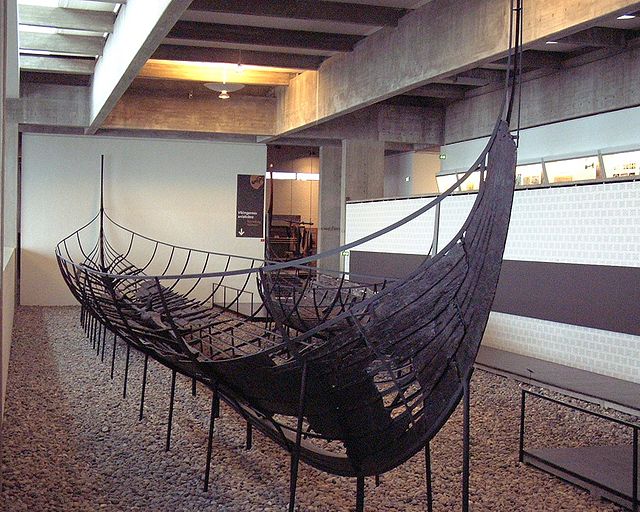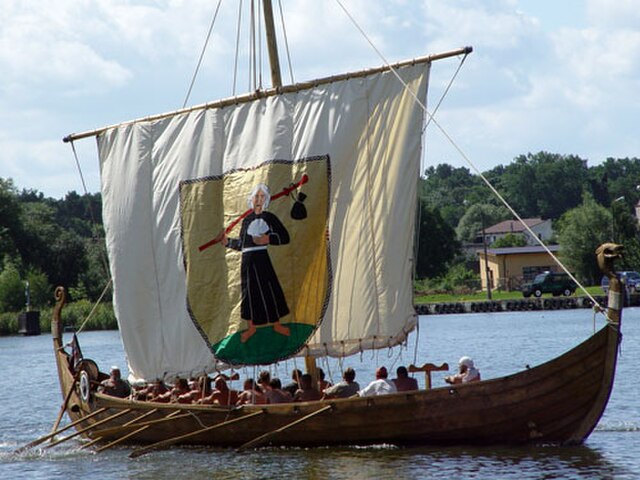The Skuldelev ships are five original Viking ships recovered from the waterway of Peberrenden at Skuldelev, c. 20 km (12 mi) north of Roskilde in Denmark. In 1962, the remains of the submerged ships were excavated in the course of four months. The recovered pieces constitute five types of Viking ships and have all been dated to the 11th century. They are thought to have been an early form of blockship, i.e. ships that were scuttled to block potential invasions from the sea. The numbering of the ships is slightly confusing as when the remains were unearthed, they were thought to comprise six ships, but after "Skuldelev 2" and "Skuldelev 4" were later discovered to be parts of one ship, it was decided not to renumber the other vessels.
Skuldelev 1
Skuldelev 2
Skuldelev 3
Skuldelev 3 (rear-view)
Viking ships were marine vessels of unique structure, used in Scandinavia from the Viking Age throughout the Middle Ages.
The boat-types were quite varied, depending on what the ship was intended for, but they were generally characterized as being slender and flexible boats, with symmetrical ends with true keel. They were clinker built, which is the overlapping of planks riveted together. Some might have had a dragon's head or other circular object protruding from the bow and stern for design, although this is only inferred from historical sources. Viking ships were used both for military purposes and for long-distance trade, exploration and colonization.
A modern replica of a Viking ship. This ship is of the snekkja longship type.
The Gokstad ship, on display at the Viking Ship Museum in Oslo, Norway
The Söderala vane, presumably once used on a Viking ship
The Ladby ship is part of a ship burial that has been preserved where it was discovered, with a museum built around it








